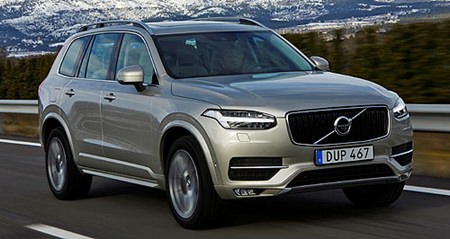Volvo has had the global launch of the new XC90 SUV – a model the company describes as its most important since the debut of the original version 13 years ago.
Volvo these days is owned by China’s Zhejiang Geely Holding Group who acquired the Swedish car maker in 2010.
The redesigned seven-seat wagon is an all-new model, being the first to use Volvo’s Scalable Product Architecture (SPA) platform, its Sensus advanced connectivity system, various new active safety features and additions to its Drive-E powertrain family including a new ‘twin engine’ plug-in hybrid.
 Volvo XC90
Volvo XC90
Volvo Car Group product manager Lars Lagstrom said the new model builds on the reputation of the well-received original with significant improvements to ride, handling and safety technology. “The first XC90 was a revolution and we had a totally new approach to SUVs,” he said. “We have kept that heritage and gone one step further with a more ‘unicentric’ approach.”
“We have all the safety features in, even more than we have ever had, and much more strength and refinement. We have done a completely new platform, and had the opportunity to have the most modern front and rear suspension to get the optimal ride and handling agility that everyone is looking for in this segment.”
Lagstrom claims the XC90 is the first genuine seven-seat – as opposed to five-plus-two-seat – SUV in the world to offer a plug-in hybrid powertrain, and added that it was benchmarked against the Mercedes ML-Class, BMW X5 and Audi Q7.
The XC90 line-up will consist of seven variants made up of three new specification grades and three four-cylinder powertrain choices from Volvo’s Drive-E engine family.
The all-new four-cylinder lineup starts with the 2.0 liter D5 twin-turbo-diesel, producing 165 kW at 4250 rpm and 470 Nm between 1750-2500 rpm, resulting in 0-100 km/h in 7.8 seconds.
The T6 petrol is also a 2.0 liter, but it is supercharged as well as turbocharged and delivers 235 kW at 5700 rpm and 400 Nm from 2200-5400 rpm for a 0-100 km/h time of 6.5 seconds.
Volvo’s T8 plug-in hybrid combines the T6 petrol engine with a 60 kW/240 Nm electric motor and a 9.2 kWh lithium-ion battery for a combined output of 294 kW and 640 Nm.
The hybrid can cover 0-100 km/h acceleration of 5.9 seconds, and it is naturally the lowest consumption of the three powertrains, with a combined fuel consumption figure of 2.5 liters per 100 kilometers.
The other options offer strong economy figures of 7.7 L/100 km for the T6 petrol and 5.7 L/100 km for the diesel.
Every variant offers an all-wheel drive layout and is matched with a new Aisin-Warner eight-speed automatic transmission.
The electric motor is located over the rear axle while the battery is positioned in the central tunnel, which Volvo claims has not impacted cabin space.
A new double-wishbone set-up is used at the front, with two transverse links to attach the wheel to the car, which Volvo says helps improve cornering, as well as reducing bodyroll, understeer and torque steer.
At the rear end the XC90 uses an integral link axle with new lightweight transverse leaf springs replacing the outgoing model’s coil springs.
T8 variants gain a few features unique to the hybrid, including a ‘pre- conditioning’ system that allows drivers to cool the drivetrain, battery or cabin from within the car or via a smartphone app.
Standard equipment includes keyless start, auto-dimming interior and exterior mirrors, rain-sensing wipers, daytime running lights, LED headlights with active high-beam and ‘active bending’, power tailgate, roof rails, cruise control, sat-nav and 19 inch alloy wheels.
In terms of safety, the XC90 gets a parking assist camera, front and rear parking sensors, lane-departure warning, collision mitigation system, hill-start assist and a road-sign recognition system.
Volvo is certainly attempting to win back some of the drivers of previous Volvo’s, but for me, the XC90 looks very staid, but then so did older Volvo’s.




